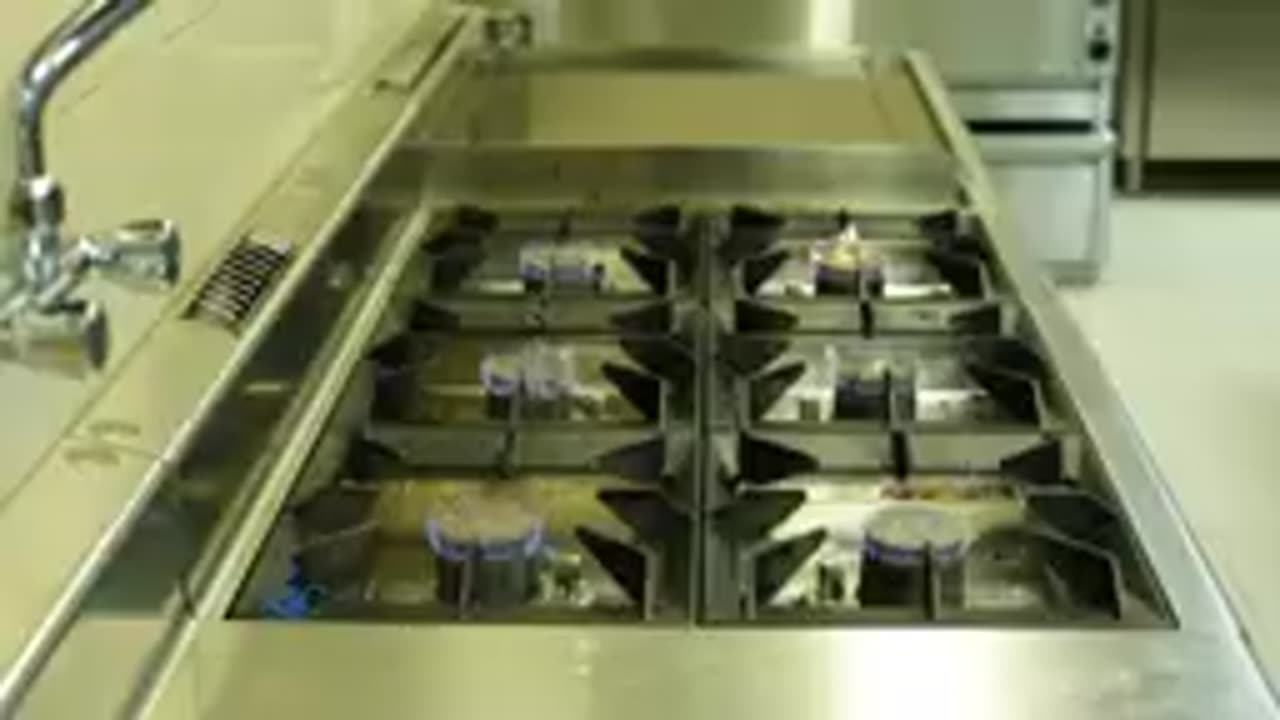Premium Only Content

Best Practices for Cleaning Food Contact Surfaces
**Best Practices for Cleaning Food Contact Surfaces** are essential for maintaining hygiene and preventing contamination in food preparation and service areas. Clean surfaces reduce the risk of foodborne illnesses, improve food safety, and ensure compliance with health regulations.
Here’s a comprehensive guide to cleaning food contact surfaces effectively:
---
### **Why Is It Important?**
Food contact surfaces are direct pathways for contamination, as they come into contact with food that could harbor pathogens (e.g., bacteria, viruses). Proper cleaning and sanitizing prevent cross-contamination, spoilage, and the spread of allergens, keeping customers and employees safe.
---
### **Steps for Effective Cleaning and Sanitizing**
1. **Pre-Cleaning**:
- **Remove food debris**: Scrape off large pieces of food, grease, or spills using a scraper or disposable cloth.
- **Rinse**: Use warm water to rinse off remaining debris before applying cleaner.
2. **Cleaning**:
- **Choose the right cleaner**: Use a detergent or cleaner that is suitable for food-contact surfaces (e.g., mild dish soap or food-safe degreasers).
- **Scrub**: Use scrubbers, brushes, or cloths to remove dirt, grease, and food residues from the surface. Avoid using sponges that can harbor bacteria.
- **Clean from top to bottom**: Clean surfaces starting from the top to avoid dirtying areas already cleaned.
3. **Rinsing**:
- After applying the cleaning solution, **rinse** the surface thoroughly with clean water to remove any remaining detergent or residues.
4. **Sanitizing**:
- **Apply an appropriate sanitizer**: Use food-safe sanitizers, such as chlorine-based or quaternary ammonium compounds (quats), according to the manufacturer's instructions.
- **Contact time**: Ensure the sanitizer stays on the surface for the required contact time (usually 30 seconds to 1 minute) to effectively kill harmful microorganisms.
5. **Air Dry**:
- Allow surfaces to air dry completely. This is critical, as towels or cloths can reintroduce bacteria if not sanitized or used improperly.
---
### **Types of Food Contact Surfaces**
- **Cutting boards**: Clean immediately after use, especially when switching between raw meats and vegetables.
- **Countertops**: Wipe down before and after food preparation, especially between tasks.
- **Utensils and Equipment**: Knives, spoons, spatulas, and machines should be cleaned after every use.
- **Food Storage Containers**: Wash and sanitize regularly, especially if they have been in contact with raw food.
- **Serving Dishes**: Clean thoroughly before serving any new food to avoid cross-contamination.
---
### **Best Practices for Specific Surfaces**
1. **Cutting Boards**:
- Use color-coded boards to prevent cross-contamination (e.g., green for vegetables, red for meat).
- **Wooden boards** should be cleaned with warm, soapy water but should be sanitized less often due to the material's porous nature.
- **Plastic boards** can be sanitized more easily but may need to be replaced if they become deeply scratched.
2. **High-Touch Surfaces** (e.g., handles, door handles, light switches):
- Clean and sanitize these areas frequently, especially during periods of high activity.
3. **Food Preparation Equipment** (e.g., blenders, slicers, grinders):
- Disassemble and clean each part to remove food particles and residue. Ensure all contact surfaces are sanitized.
---
### **General Cleaning and Sanitizing Tips**
1. **Frequency**:
- Clean and sanitize food contact surfaces **before and after** food preparation, and **periodically** throughout the day to maintain hygiene.
2. **Storage of Cleaning Supplies**:
- Store cleaning agents and sanitizers separately from food to avoid contamination. Follow proper labeling and handling instructions.
3. **Training**:
- Ensure staff members are trained in the correct cleaning and sanitizing procedures to prevent mistakes.
4. **Use Clean, Dry Cloths**:
- Always use clean, dry cloths to wipe down surfaces to avoid reintroducing bacteria.
- **Microfiber cloths** are ideal as they pick up more debris and bacteria than regular towels.
5. **Avoid Overloading**:
- Don’t overload sinks or dishwashers, as this can prevent adequate cleaning and sanitizing. Allow enough space for each item to be cleaned effectively.
---
### **Common Mistakes to Avoid**
1. **Not Following Manufacturer Instructions**:
- Always follow the manufacturer's guidelines on cleaning and sanitizing products to ensure they’re used correctly.
2. **Skipping Sanitizing**:
- Cleaning alone isn’t enough. Ensure surfaces are properly sanitized after cleaning to kill harmful germs.
3. **Using Dirty Towels**:
- Reuse cloths or towels without properly laundering them can reintroduce bacteria to clean surfaces. Ensure cloths are washed and sanitized regularly.
4. **Improper Drying**:
- Don’t wipe down surfaces with dirty towels. Allow surfaces to air dry whenever possible to prevent bacterial regrowth.
---
### **Key Tools for Cleaning Food Contact Surfaces**
1. **Brushes and Scrubbers**: Use durable brushes and scrubbers suitable for your surfaces, and discard when worn out.
2. **Spray Bottles**: Store cleaning and sanitizing solutions in clearly labeled spray bottles.
3. **Thermometers**: Ensure surfaces are at the correct temperatures for cleaning, especially in high-heat equipment like grills or ovens.
4. **Dishwashers**: Ensure the dishwasher operates at the correct temperature and sanitizer levels for effective cleaning.
---
### **Conclusion**
By consistently following proper cleaning and sanitizing procedures, you can significantly reduce the risk of contamination and ensure a safe and hygienic environment in the kitchen. Regular cleaning also improves the efficiency and lifespan of your equipment and surfaces.
**Quick Tip**: Set a cleaning schedule that includes routine cleaning, deep cleaning sessions, and checks to ensure your staff follows best practices consistently.
-
 2:12:46
2:12:46
Price of Reason
22 hours agoAmber Heard BACKS Blake Lively Lawsuit Against Justin Baldoni! Is Disney CEO Bob Iger in TROUBLE?
56.9K23 -
 1:01:17
1:01:17
The StoneZONE with Roger Stone
17 hours agoChristmas Edition: Why the Panama Canal is Part of the America First Agenda | The StoneZONE
127K47 -
 18:12:15
18:12:15
LFA TV
1 day agoLFA TV CHRISTMAS EVE REPLAY
142K18 -
 13:32
13:32
Scammer Payback
18 hours agoChanging the Scammer's Desktop Background to his Location
12.2K3 -
 4:21
4:21
BIG NEM
20 hours agoNikola Tesla's Secret to Cultivating Creativity & Genius
8.76K1 -
 15:03
15:03
The Anthony Rogers Show
1 day agoAnthony Rogers - Live at Cusumano's Pizza (Upstairs)
6.96K1 -
 4:33:48
4:33:48
tacetmort3m
1 day ago🔴 LIVE - THE ZONE KEEPS PULLING ME BACK - STALKER 2 - PART 15
73.2K13 -
 22:45
22:45
Brewzle
1 day agoI Went Drinking In A Real Bourbon Castle
52.9K4 -
 48:36
48:36
PMG
2 days ago $4.88 earned"Parkland Parent Speaks Out On Kamala Harris Using Victims"
42.7K12 -
 4:06
4:06
The Lou Holtz Show
23 hours agoCoach Lou Holtz’s Heartfelt Christmas Message 🎄 | Family, Faith & Notre Dame Spirit 💚 #christmas
31K1